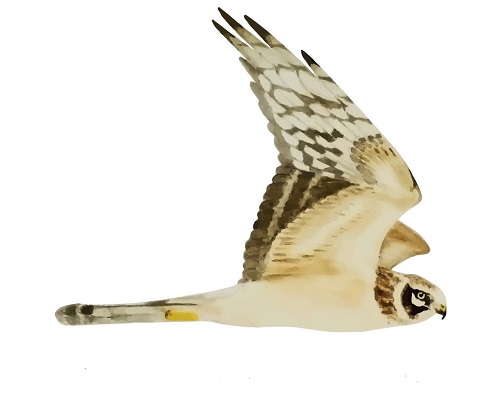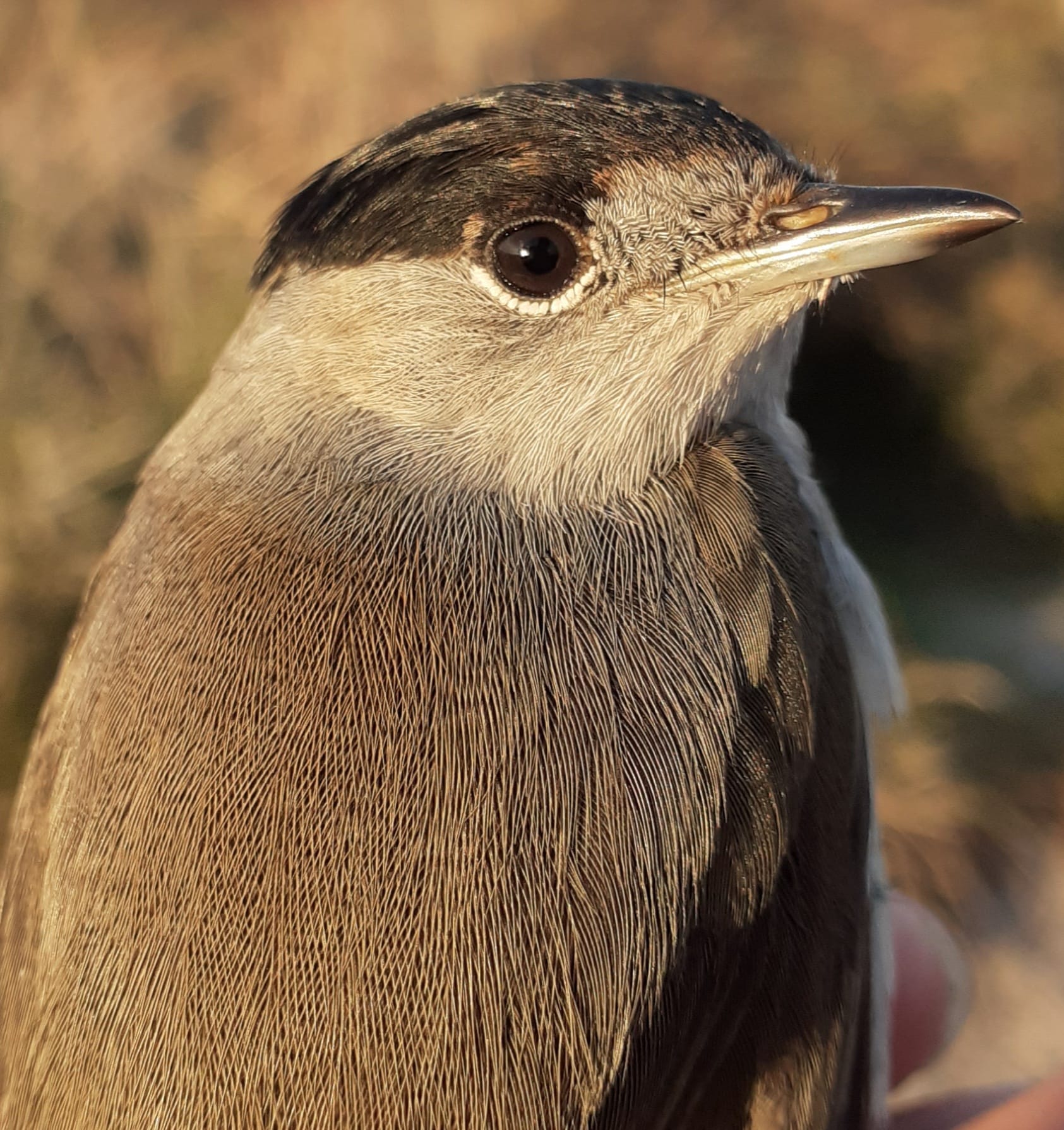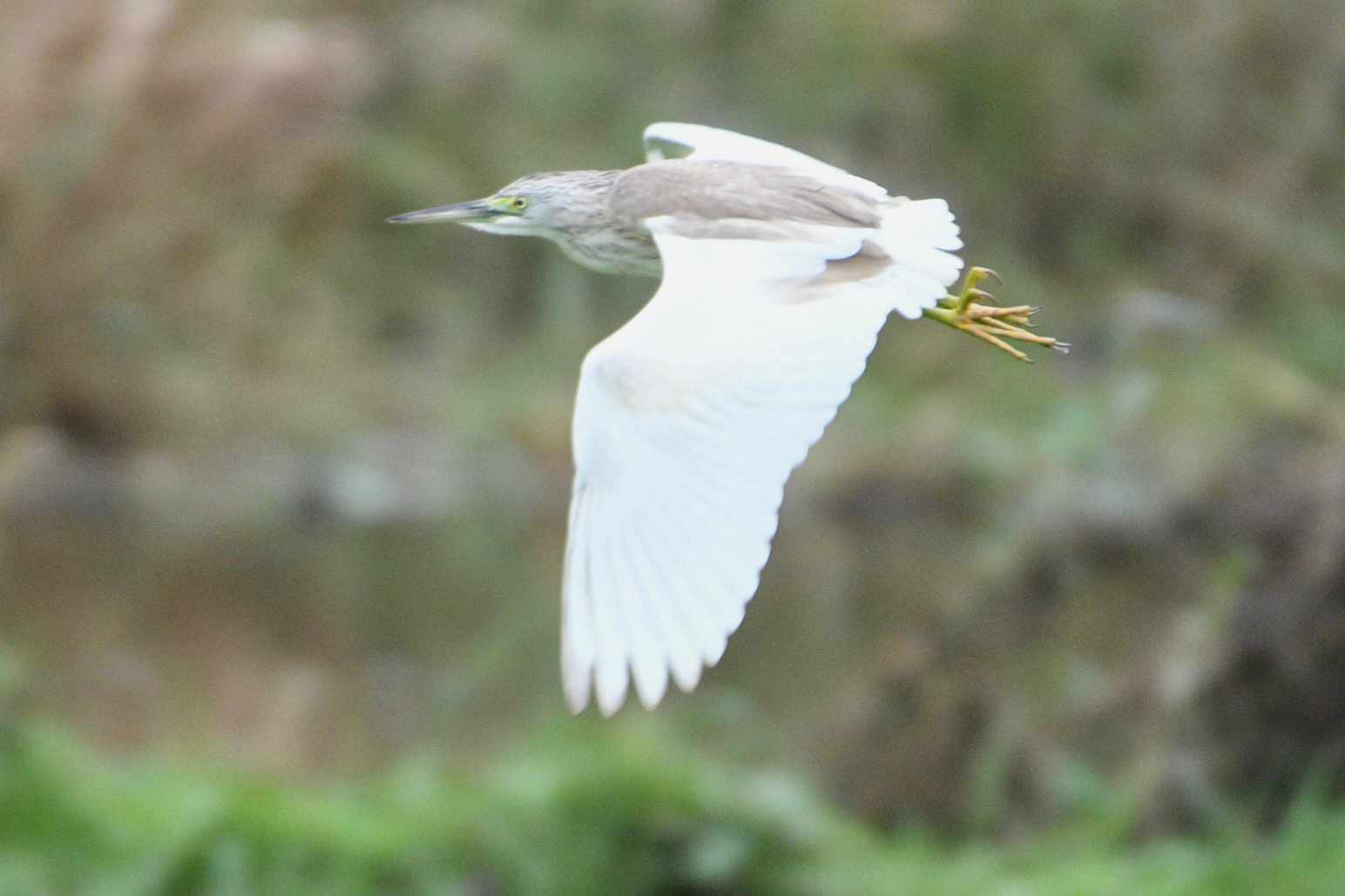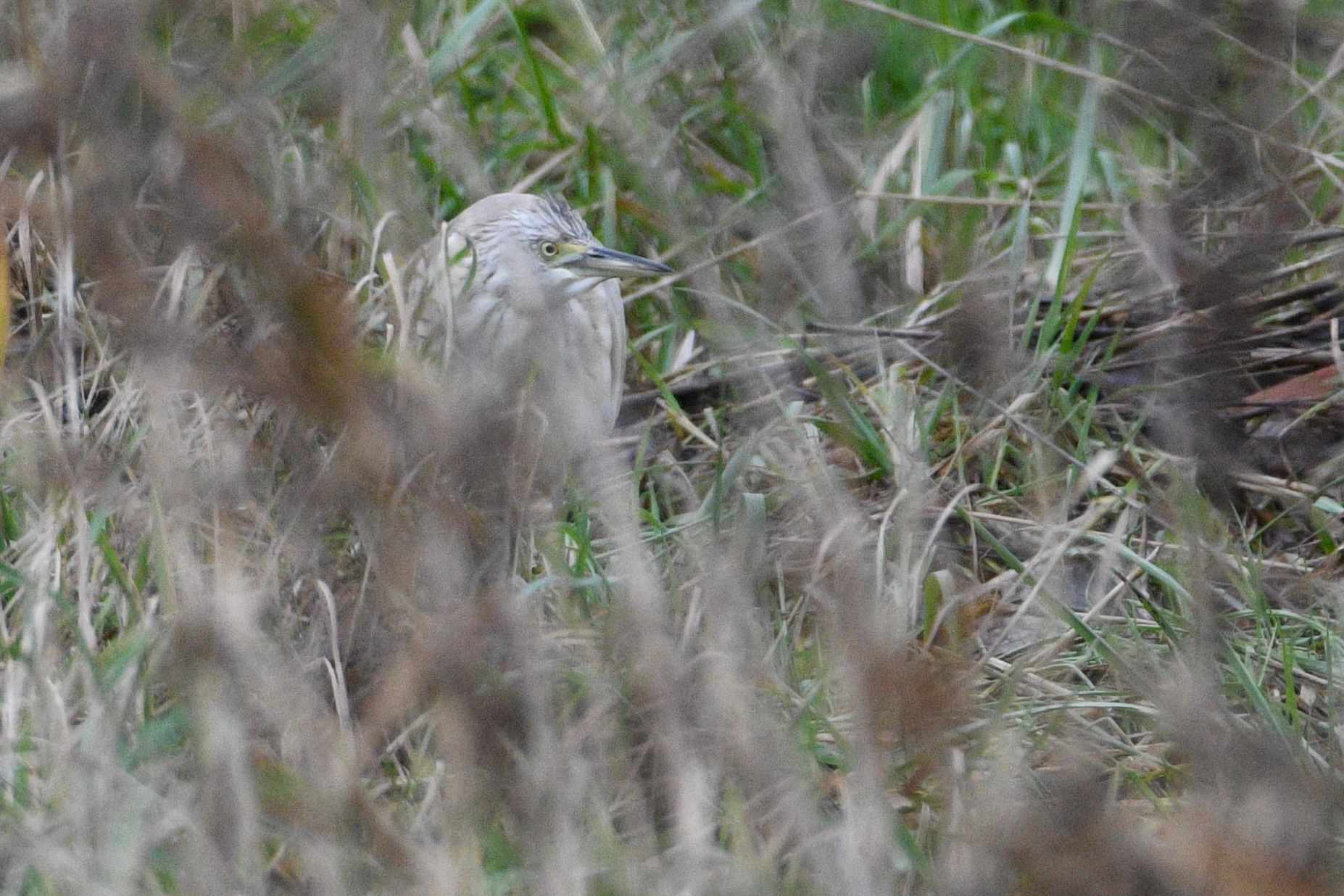Her på Skagen Fuglestations blog bringes korte nyheder i dagbogsformat om hændelser på fuglestationen.
Puffin under Guillemots
This day started early. Mathilde and Thomas went to Kabeltromlen to continue to take down nets. Luckily the wind decreased a bit over the night and they could open the nets. At least they could catch some birds like Blackbird (Solsort) and Bullfinch (Dompap).
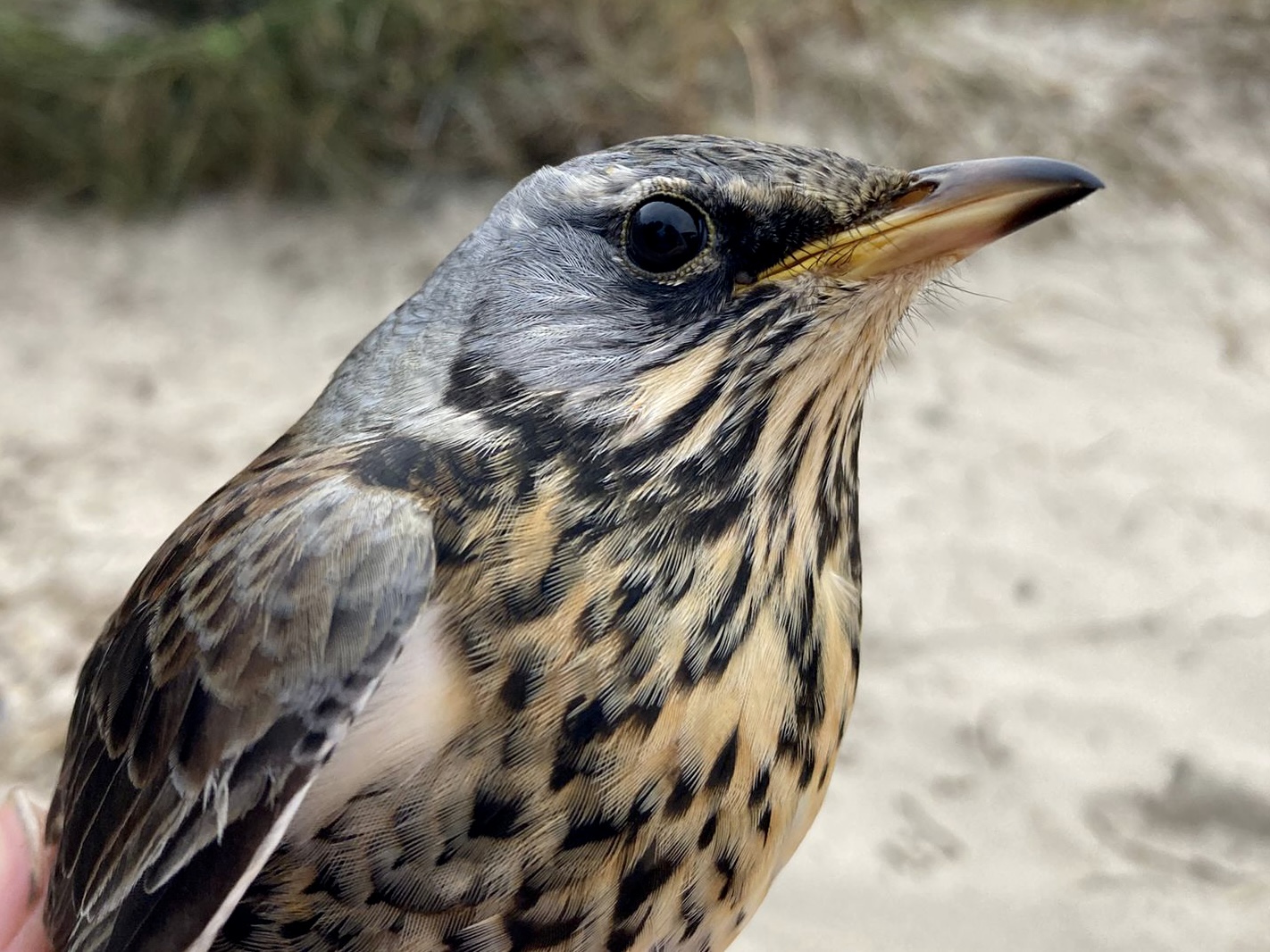
Simon and I woke up at 07:00 am. to head out for the migration count. Due to the east wind we went like yesterdat to Nordstrand to not be exposed in the wind. The first hour was quiet slow, but some Auks (Lomvie/Alk) were moving again. The second hour was much better in terms of species. In a group of 7 Guillemots (Lomvie) we could spot a Puffin (Lunde) heading east. Super cool to see the size difference between those species. I have never seen a Puffin doing this, funny. As a nice ending a Smew (Lille Skalleslugger) flew by. Really cool, I was missing this bird at Lista Bird Observatory.
Gustav arrived around 10:00am to count the two remaining hours. Unfortunatley, he was not lucky and except of the common species nothing special showed up. At least some groups of Whooper Swans (Sangsvane) flew over.
In the meantime we went back with a short stop to look at some Common Redpolls (Stor Gråsisken) which Michael could catch. Really beautiful birds. Then we continued our way back and we checked quickly the Gull roosting in Grenen and said hello to Mathilde and Thomas.
After lunch we went outside again. Simon and me tried to find the three Penduline Tits (Pungmejse), which were seen in the moring. Instead of Penduline Tits we could see Whooper Swans (Sangsvane) migrating and two flocks of Waxwings (Silkehale). After taking down some more nets it was time for the most interesting task: collecting snails. The first step was to make sure, we can identify the snails right, so we put on waders and went to the stones where they should be. We realized quickly that it was not that easy to find the needed one among all the snails. The waves and the wind were not helping really, so we had to stop. Mission snails failed - but we will try again!
Simon and me used the last light of the day for a quick jump into the sea with a warm shower after. Thomas went to the store to buy everything he needs for cooking while the rest did some office work. Then it was time to go night-catching again. We were also successful today with a stunning Woodcock (Skovsneppe).
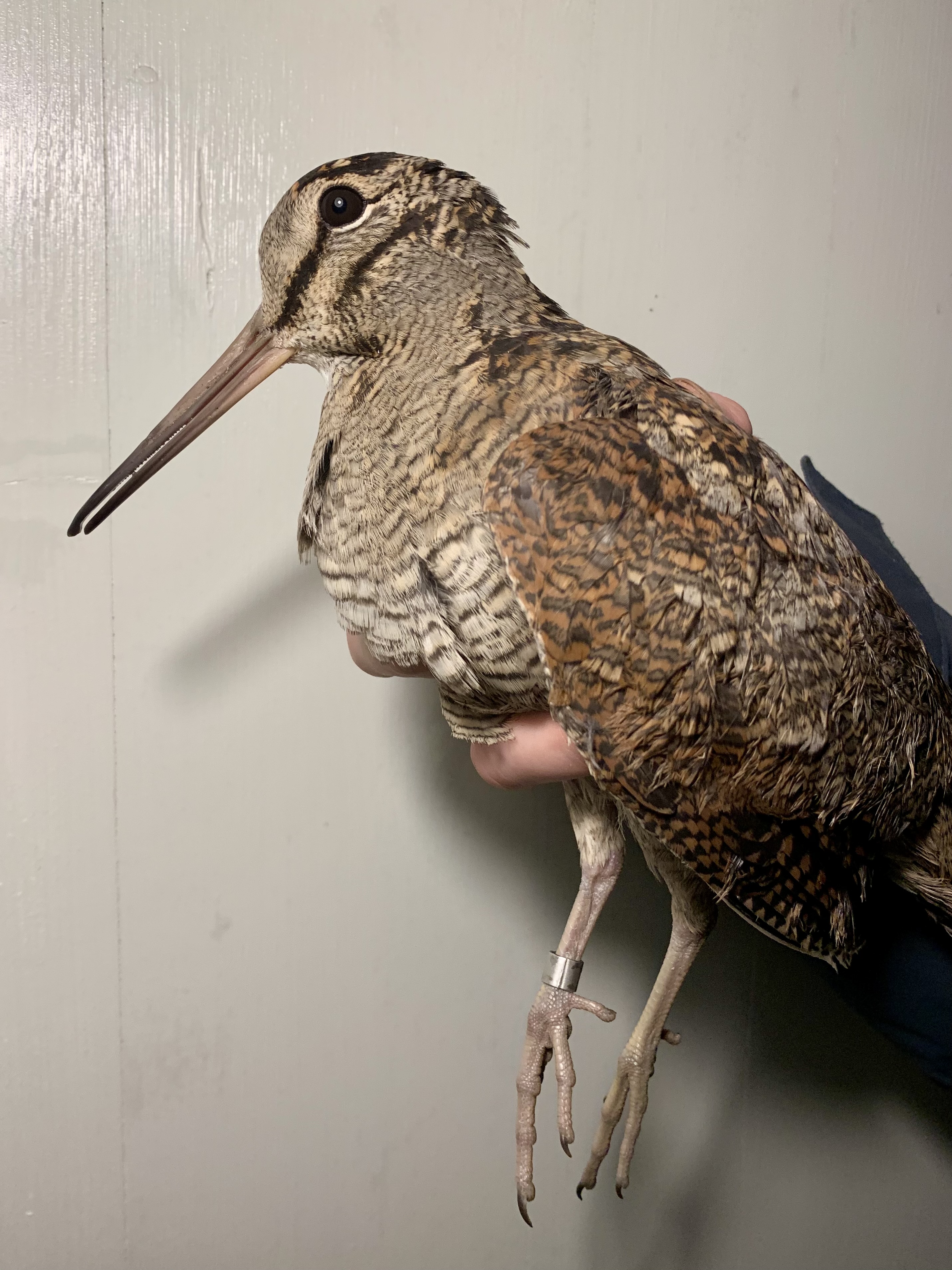
What a nice second day for me at Skagen. I really enjoy the time here although its only a short time at Skagen for me.
Ringing (Jennes Sø):
| Robin | Rødhals | 1 | ||||||||||||||
| Dunnock | Jernspurv | 1 | ||||||||||||||
| Common Redpoll | Stor Gråsisken | 9 | ||||||||||||||
| Wren | Gærdesmutte | 1 | ||||||||||||||
| Great Tit | Musvit | 1 | ||||||||||||||
| Blue Tit | Blåmejse | 2 |
Total: 15
Today’s observations on Dofbasen from observers in the area.
People: Thomas Weston, Mathilde Ducroz, Gustav Nyberg, Simon Kiesé, Lasse Heckroth, Michael Ancher, Jeppe Therkildsen Madsen.
A windy Sunday
Gustav headed out for migration count for the first two hour shift at Nordstrand to try and escape some of the strong wind gusts. Not much to report on sightings. As usual, many Gannets (Sule) and Kittiwakes (Ride) were seen as flybys. Highlights for Gustav were the Whooper swans (Sangsvane) flying over and the Long-tailed ducks (Havlit).
I woke up at 8:00am, the lie-in was greatly appreciated by everyone! Simon and his friend, Lasse, from Lista bird observatory that arrived yesterday and is staying with us for a few days, headed out as the same time as Thomas and me to relieve Gustav on migration count and cover the final two hours. Not much action during the second half of the migration either. A lot auks were observed with around 300 Razorbills (Alk) and 50 Guillemots (Lomvie). A pink-footed goose (Kortnæbbet Gås) was also seen flying in between a flock of Whooper swans (Sangsvane) which caused some confusion to Simon and Lasse on the number of birds in that flock. They had some nice views as they landed on the sea in front of them.
Thomas and me headed to Kabeltrommlen, but not to ring, too much wind for that. Instead we got working on closing the site. The net after the ditch on the south side got mended, all the holes on the top shelf are now sowed shut. We also took down seven of our nets on the north side so that the work on Tuesday is not as long. Thomas had the ingenious idea of transporting back the pole using the front of the bike. And although the bike had a tendency to steer slightly to left, I think it turned out pretty good and was definitely quicker. You can make your own opinion based on this picture.
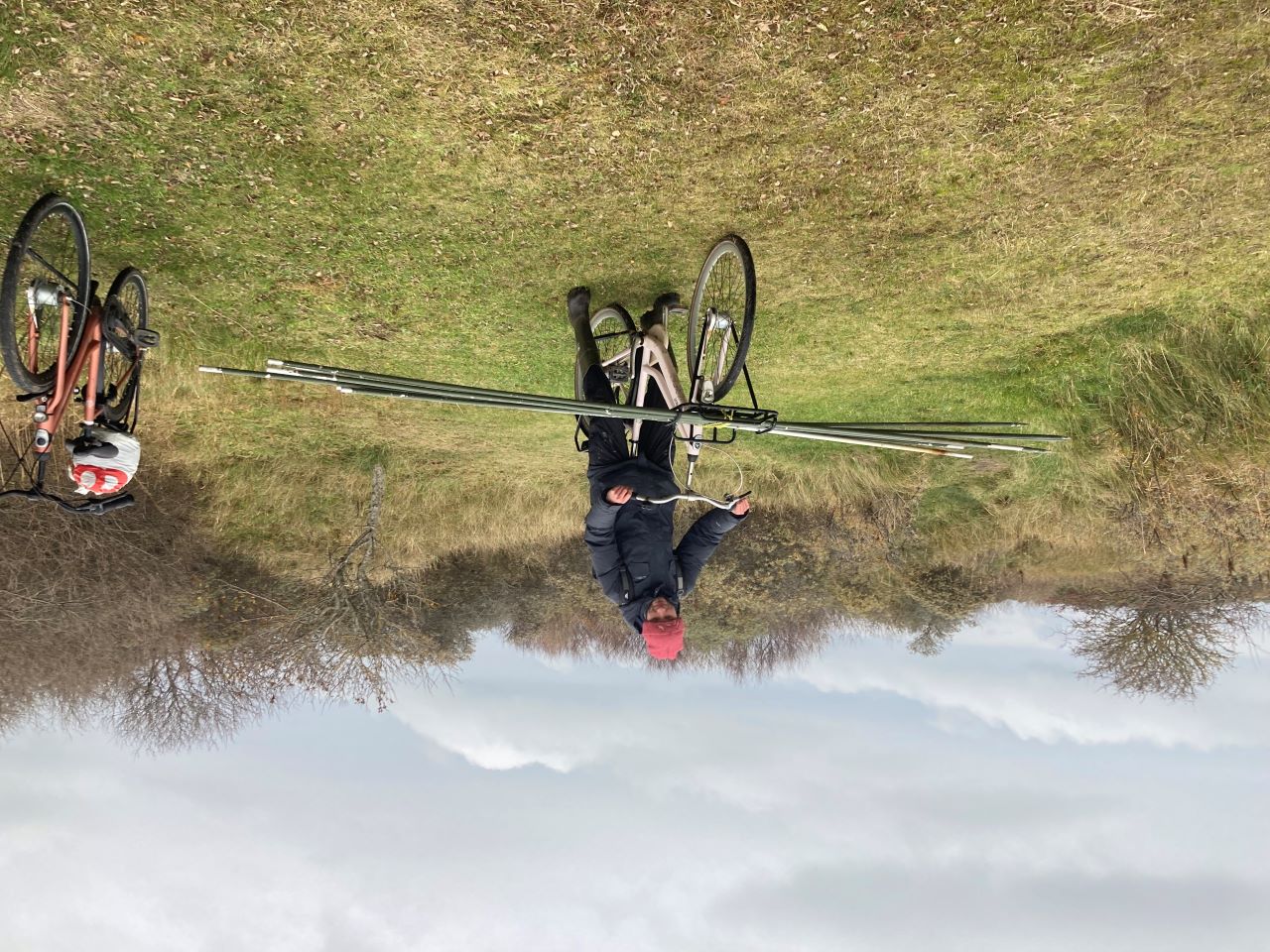
The afternoon was spent cleaning the flat and lab. I had a phone call, Gustav is finishing his videos to promote the station, and the others went on a walk. They went via the tractor track up to the point and saw not much in terms of birds apart from a few gulls (Måge) then walked back via the beach and watched two woodcocks (Skovsneppe) fly over. Now Simon and Lasse are out night-catching while Gustav is cooking.
Update: They were successful! Look at this sweet bird.
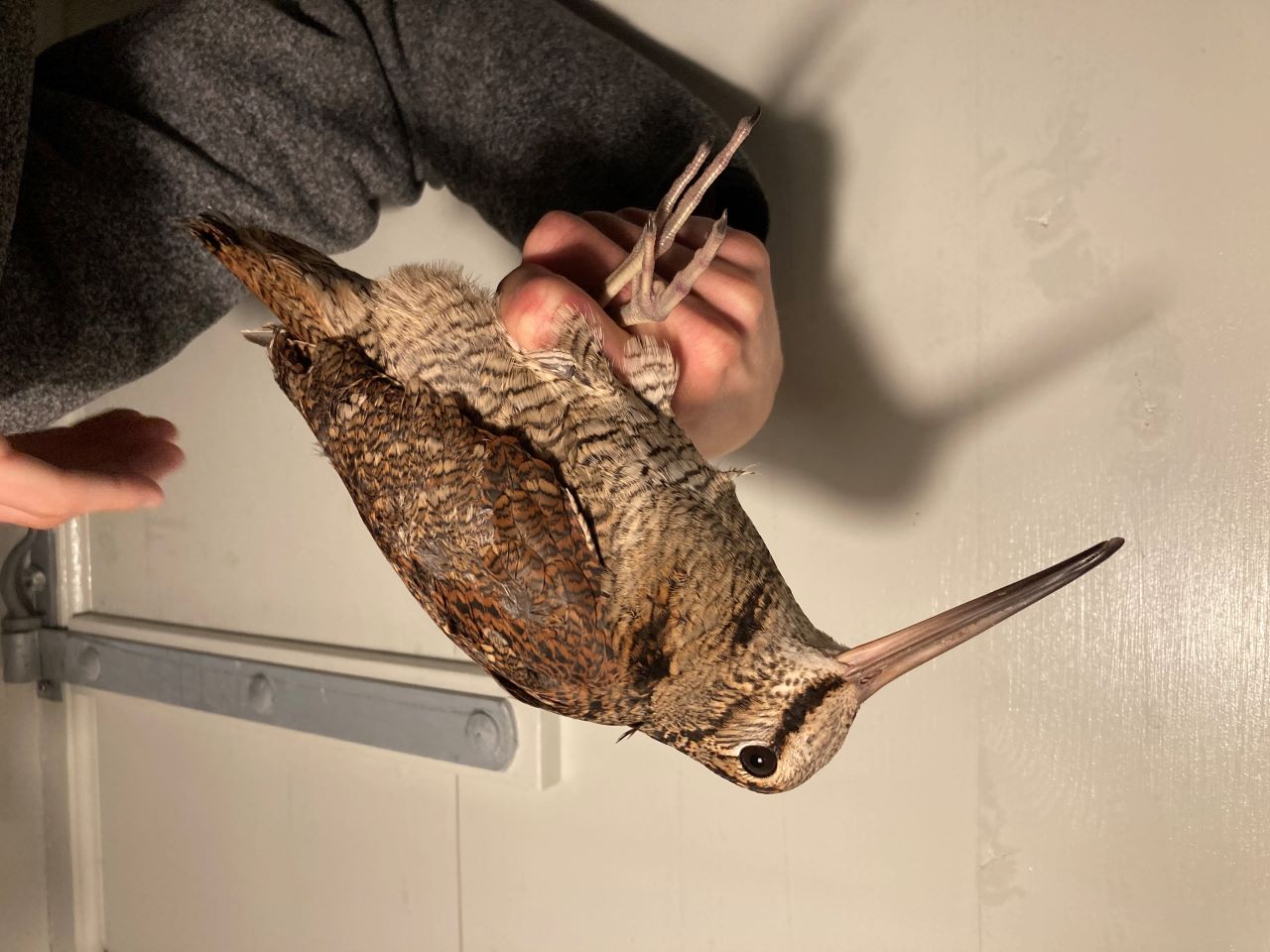
Ringing (Grenen):
Woodcock - Skovsneppe 1
Today’s observations on Dofbasen from observers in the area.
People: Thomas Weston, Mathilde Ducroz, Gustav Nyberg, Simon Kiesé, Lasse Heckroth
the autumn is back
The last week was cold and windy so we have got winter vibes. But today was different. The wind died down and a forein star showed up. I've been told they call it the sun, but even the experts have not seen it for a while.
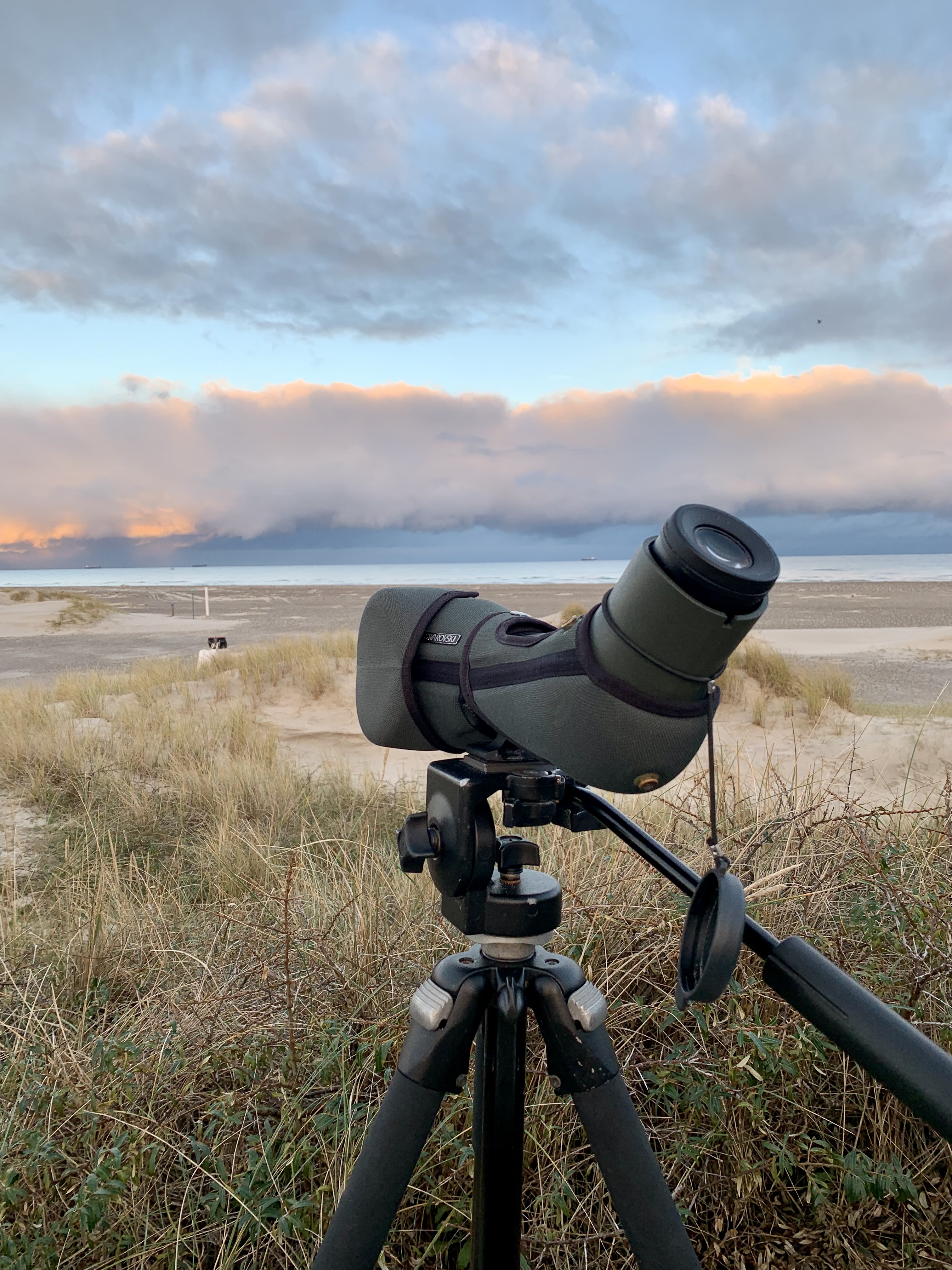
Since it is still kind of cold we followed the genius plan to switch at the count after two hours. Due to that, Gustav could sleep in and I counted from 8 to 10am. When I arrived a Great Nothern Diver (Islom) swam close to the shore. This gave really nice views!
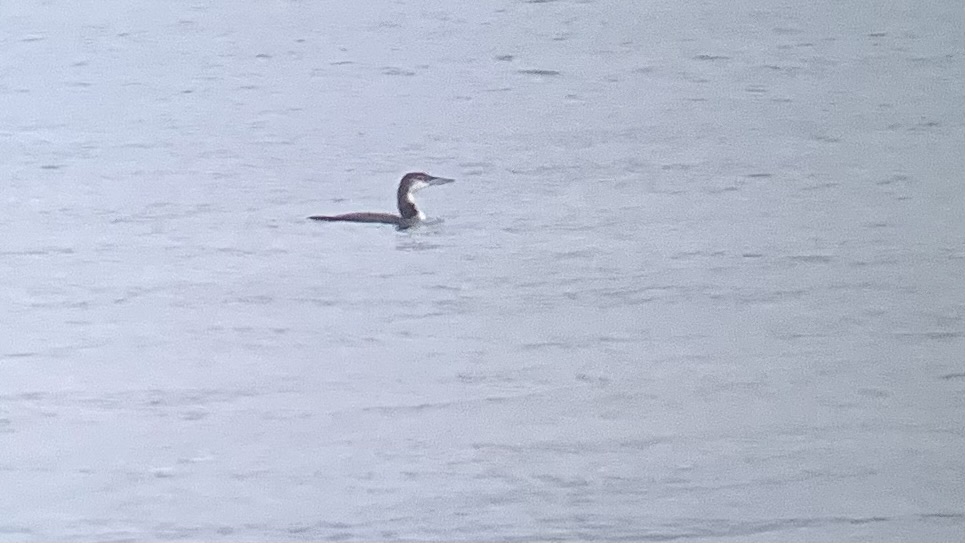 Later a Waxwing (Silkehale) and a Lapland Bunting (Lapværling) flew over. When Gustav arrived, he directly found a young Scaup (Bjergand), which was flying together with Common (Sortander) and Velvet Scoters (Fløjlsand). After a short while seawatching together I left to look for birds in the area. The birds also seemed to enjoy the nice weather and after a few meters on the road a flock of Bearded Tits (Skægmejse) and Long-tailed tits (Halemejse) (6 caudatus/nordlig, 1 europaeus/sudlig) showed up well.
Later a Waxwing (Silkehale) and a Lapland Bunting (Lapværling) flew over. When Gustav arrived, he directly found a young Scaup (Bjergand), which was flying together with Common (Sortander) and Velvet Scoters (Fløjlsand). After a short while seawatching together I left to look for birds in the area. The birds also seemed to enjoy the nice weather and after a few meters on the road a flock of Bearded Tits (Skægmejse) and Long-tailed tits (Halemejse) (6 caudatus/nordlig, 1 europaeus/sudlig) showed up well.
In the meanwhile, Mathilde and Thomas had the best day at KAB for a while. Some Common Redpolls (Stor Gråsisken) got new rings, but also a beautiful male Yellowhammer (Gulspurv). This one was the first one Mathilde has had in her hands! Even some late Blackcaps (Munk) were there. Quite many Wrens (Gærdesmutte) keeped us busy, but we still had enough time to enjoy a nice male Bearded Tit (Skægmejse).
On the way back we helped at Jennes Sø, because there were super many Common Redpolls (Stor Gråsisken).This amount of birds was really crazy to see. Two Parrot Crossbills (Stor Korsnæb) flew over and this beautiful young Arctic Redpoll (Hvidsisken) got a ring:
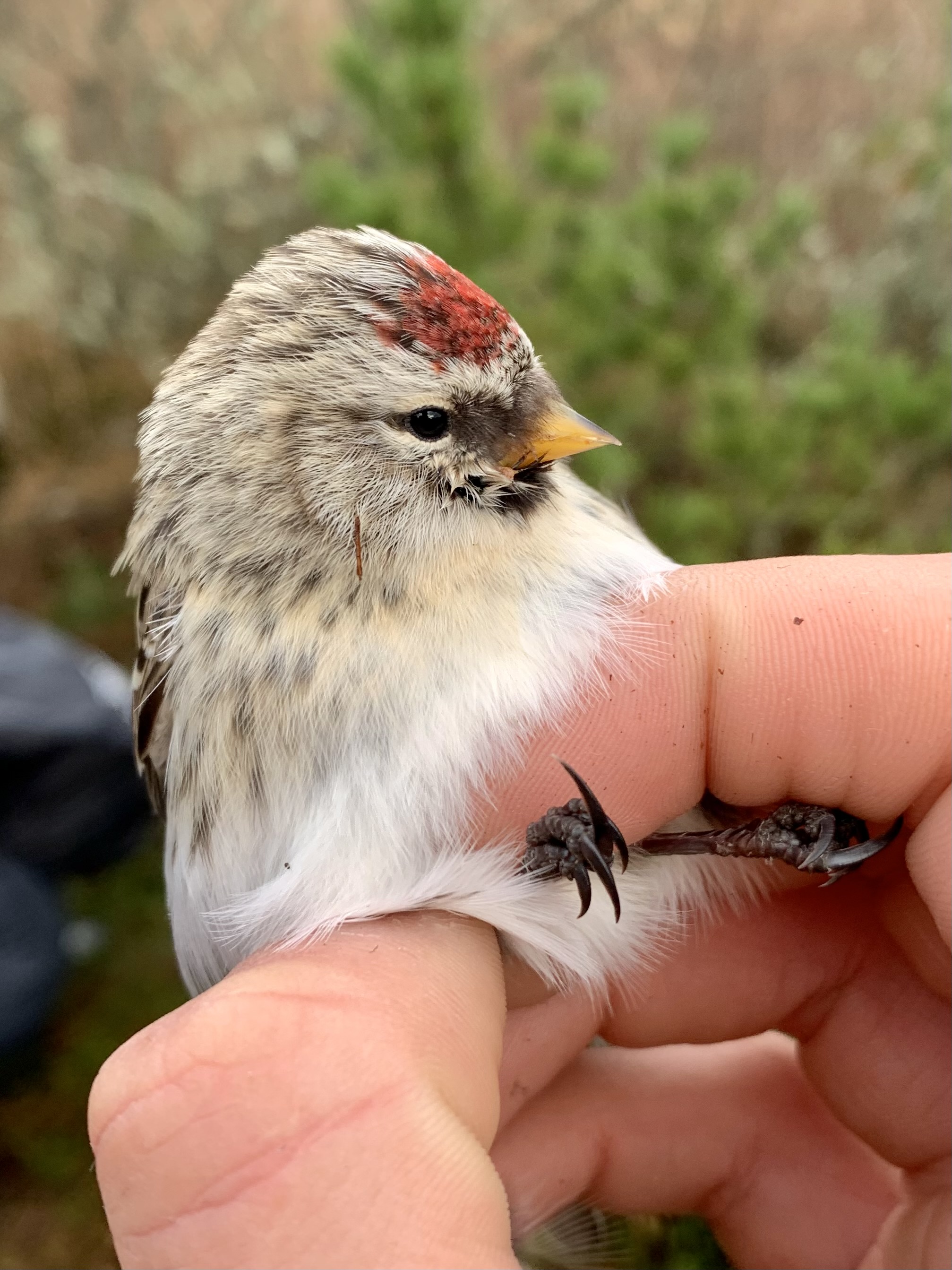
Now it is dark outside and we use this to enter the data from today, to got shopping and to cook. Then we still have enough time to go nightcatching. Hopefully tonight the Woodcocks (Skovsneppe) are less jumpy than last night. After that Lasse, a good friend of mine who volunteered this autumn at Lista Bird Observatory (Norway), will arrive for visitin us for a few days. I'm looking forward to that!
Ringing (Kabeltromlekrattet):
Ringing (Jennes Sø):
| Bullfinch (ssp. pyrrhula) | Dompap, Stor (ssp. pyrrhula) | 1 | RI | |||||||||||||
| Great Tit | Musvit | 4 | RI | |||||||||||||
| Tree Sparrow | Skovspurv | 3 | RI | |||||||||||||
| Blackcap | Munk | 1 | RI | |||||||||||||
| Siberian Chiffchaff | 1 | RI |
|
|||||||||||||
|
Arctic Redpoll |
Hvidsisken |
1 |
RI |
|
||||||||||||
| Lesser Redpoll | Lille Gråsisken | 8 | RI | |||||||||||||
| Common Redpoll | Nordlig Gråsisken | 375 | RI | |||||||||||||
| Wren | Gærdesmutte | 5 | RI | |||||||||||||
| Crested Tit | Topmejse | 4 | RI | |||||||||||||
| Blue Tit | Blåmejse | 3 | RI | |||||||||||||
| Robin | Rødhals | 5 | RI |
Total: 411
Today’s observations on Dofbasen from observers in the area.
People: Thomas Weston, Mathilde Ducroz, Gustav Nyberg, Simon Kiesé, Lasse Heckroth, Michael Ancher, Jeppe Therkildsen Madsen.
Friday Fun
Today started very dark, with a persistent low cloud over the area keeping temperatures between 2 - 3’c mark for most of the day. As with the past few days, the wind continued to gust from the NE but calmed as the morning passed. As a result, both migration count and ringing were undertaken today.
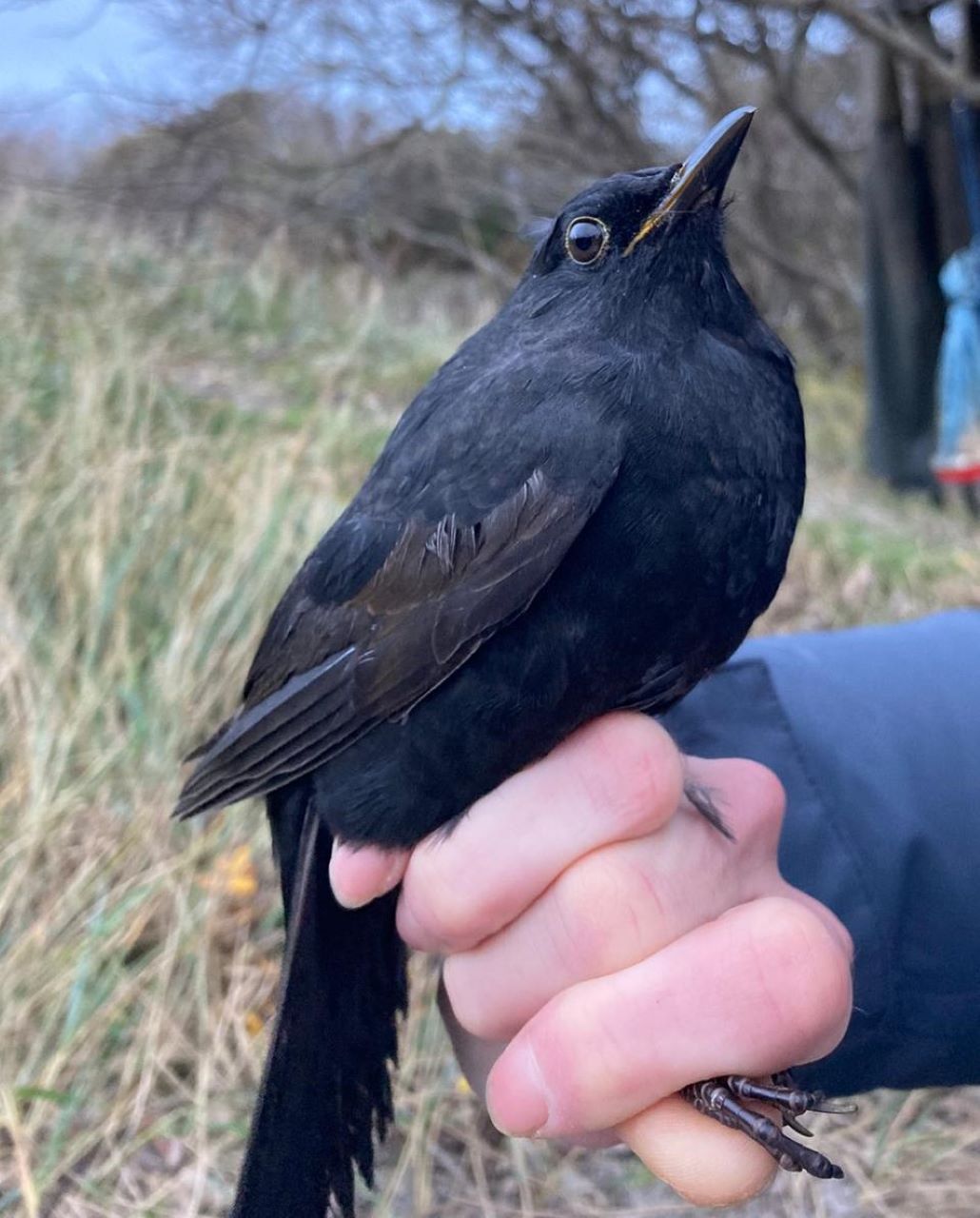
Figure 1: Juvenile male Blackbird [Solsort] with the age based on the contrast between the brown juvenile greater coverts contrasting with the moulted black adult greater coverts seen in the wing. Photo by Mathilde.
The day started with Mathilde and I going ringing at Kabeltromlekrattet. Due to the conditions, we opened just over half the nets which was ample for the two of us. The number of birds in the area were low, and it was rather quiet in the bushes too. The first couple of rounds provided quite a few birds that had been previously ringed by us on site within the last month. However, we did catch a Great Tit [Musvit] that was originally ringed in the lighthouse garden back in October which was nice to see again. During the morning we were joined by Jeppe who came to watch some of the ringing, and it was nice to show some of the birds in the hand including Blackbird [Solsort], Blue Tit [Blåmejse] and Wren [Gærdesmutte]. Overhead migration picked up as the morning went on and included a Waxwing [Silkehale], a flock of Parrot Crossbill [Stor Korsnæb] and more Whooper Swans [Sangsvane].
During this period of the morning, Gustav, Simon, and Knut were at Nordstrand completing the migration count. There was apparently a nice passage of Gannet [Sule] throughout the first few hours but the main highlights included Little Auk [Søkonge], Great-northern Diver [Islom] and Peregrine Falcon [Vandrefalk]. For more information and full sightings please see the link below for DOFbasen. Simon Jr left migration count a little early and joined Michael to set up some of his nets for upcoming ringing.
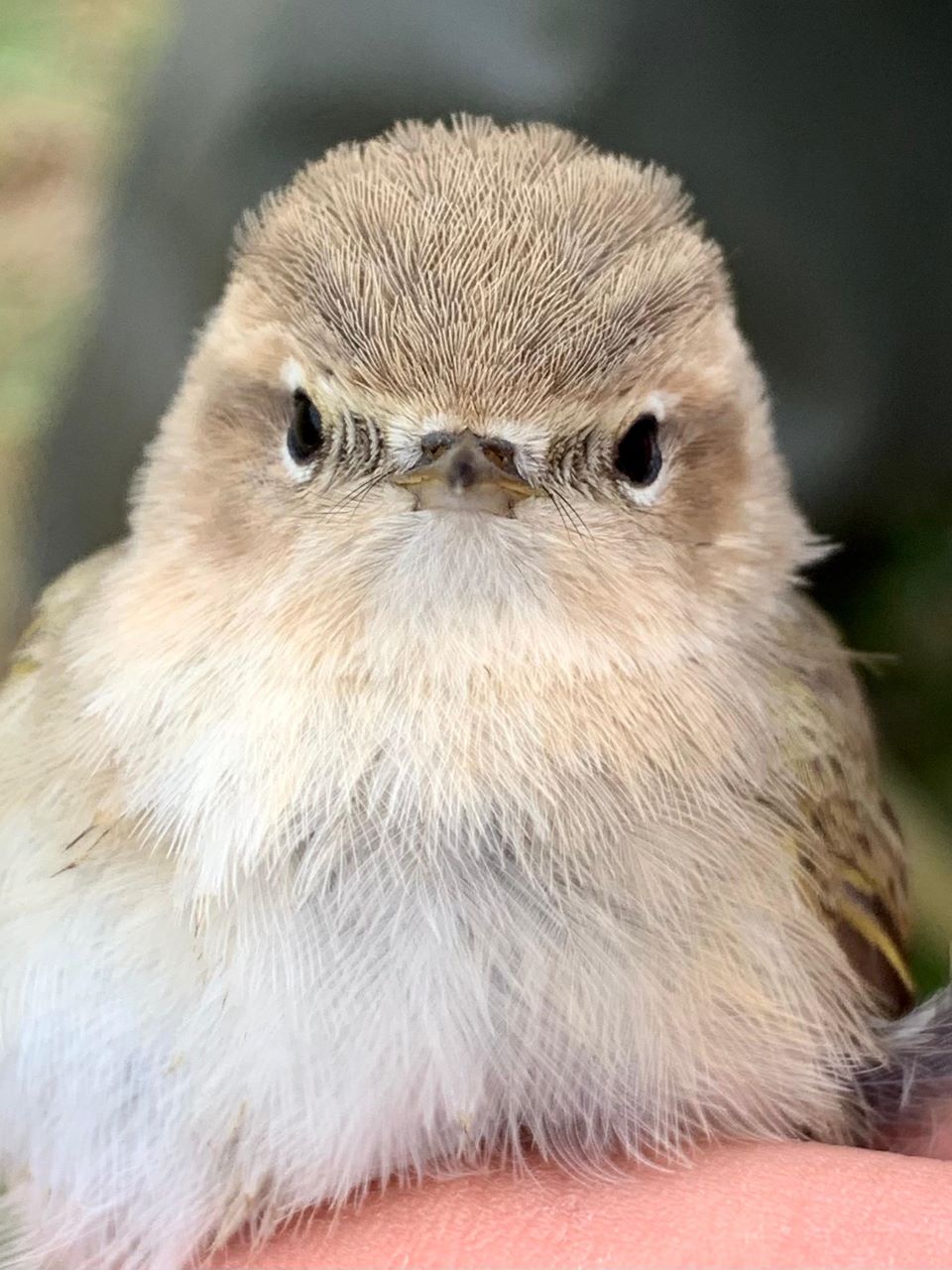
Figure 2: Siberian Chiffchaff [Gransanger, Sibirick (ssp. tristis)]. Photo by Simon Jr.
However, Simon Jr quickly joined us about ten minutes after finishing as he heard we had caught a Siberian Chiffchaff [Gransanger, Sibirick (ssp. tristis)]. I think this is now our 5th of the autumn which is very nice! It was by far the greyest looking individual we have caught this Autumn so far.
After ringing and migration counts were complete, we opened the garden nets to try for Rock Pipit [Skærpiber] and Twite [Bjergirisk]. Unfortunately none of target species were feeding in the area today. Numbers of other garden birds are always low in the afternoon, but it was nice to catch a couple of birds. Mathilde, Simon Jr and I used the time between net rounds to input data, Gustav completed his assignment for school and after closing I ended up walking into town to get some bits from the shops. It's looking bery lush with all the Christmas decorations up throughout the streets.
Ringing totals
Ringing (Kabeltromlekrattet)
|
Blackbird |
Solsort |
2 |
|
Siberian Chiffchaff |
Gransanger, Sibirisk (ssp. tristis) |
1 |
|
‘Northern’ Bullfinch |
Dompap, Stor (ssp. pyrrhula) |
1 |
|
Redwing |
Vindrossel |
1 |
|
Dunnock |
Jernspurv |
1 |
Total: 6
Ringing (Fyrhaven)
|
Bullfinch |
Dompap |
1 |
Total: 1
Overall total: 7
Today’s observations on Dofbasen from observers in the area
People: Thomas Weston, Mathilde Ducroz, Gustav Nyberg, Simon Kiesé, Knud Peterson, Michael Ancher, Jeppe Therkildsen Madsen.
A lifer for Simon!
Thomas and I headed to ringing this morning as Gustav headed back to his school to present his time here to other students and will be back tomorrow. Ringing was slow again today but a bit more active than yesterday with seven birds rather than two. Most of these birds were a small flock Redpoll (Gråsisken). Thomas enjoyed the flocks of Whooper swans (Sangsvane) flying over us while we waited to go on round. As it was quiet, we headed back early.
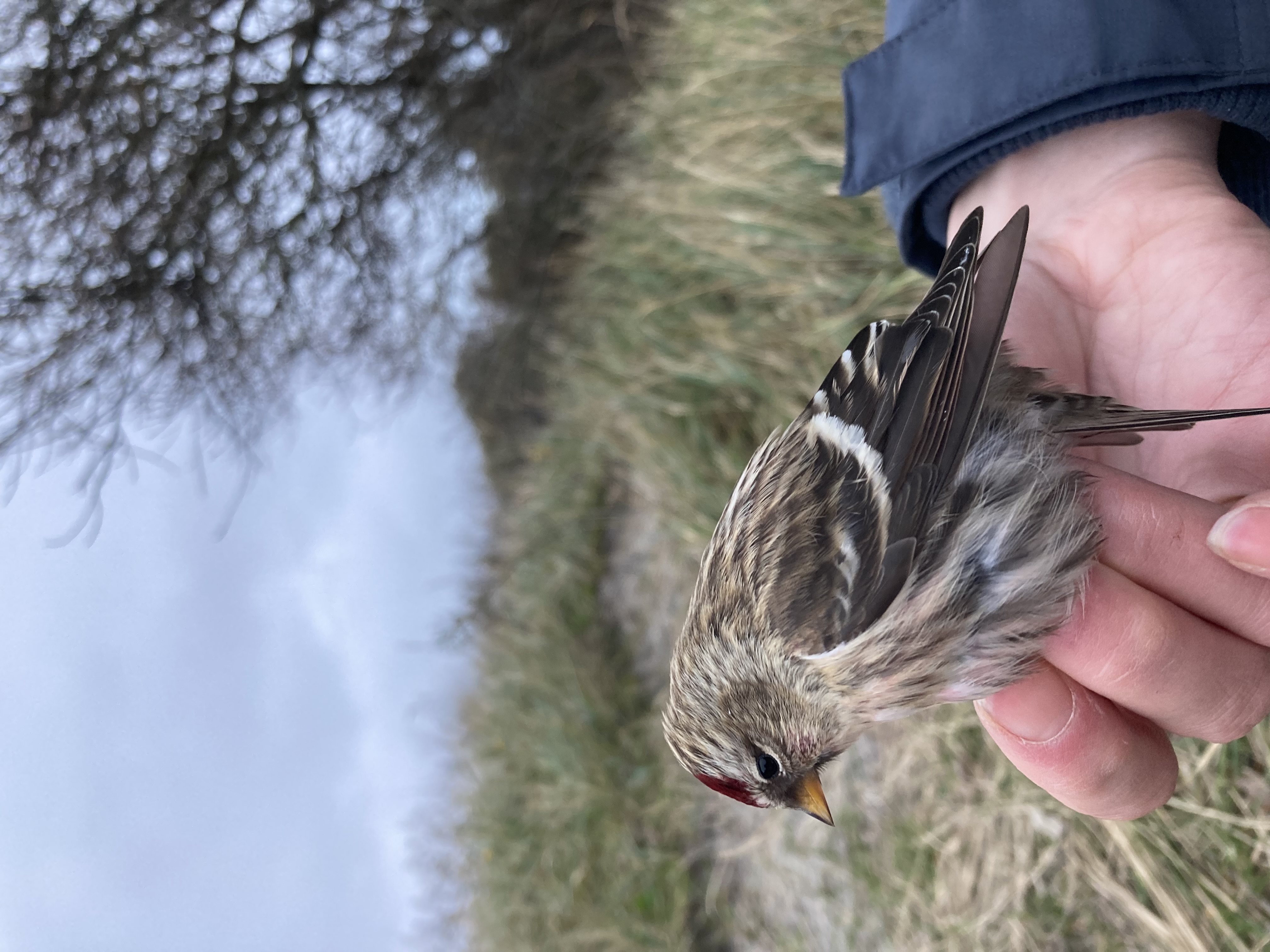
At Nordstrand, Simon and Knud were out doing migration counts. Today was a busy day for Whooper swan (Sangsvane) with around 300 flying birds. Two Little auks (Søkonge) and a Great northern diver (Islom) were also nice sightings. Interestingly, the number of Guillemots (Lomvie) increased during the count with the highest numbers in the fourth hours. For once, the numbers of Guillemots (Lomvie) were higher than Razorbills (Alk). But the highlight of the count was a self-sighted Glaucous gull (Gråmåge) by Simon. It appeared flying eastwards, reappearing 50 minutes later flying eastward close to shore, offering great views to both Simon and Knud. This made a very happy Simon as this was his first ever sighting and on his list of birds to see here in Denmark!
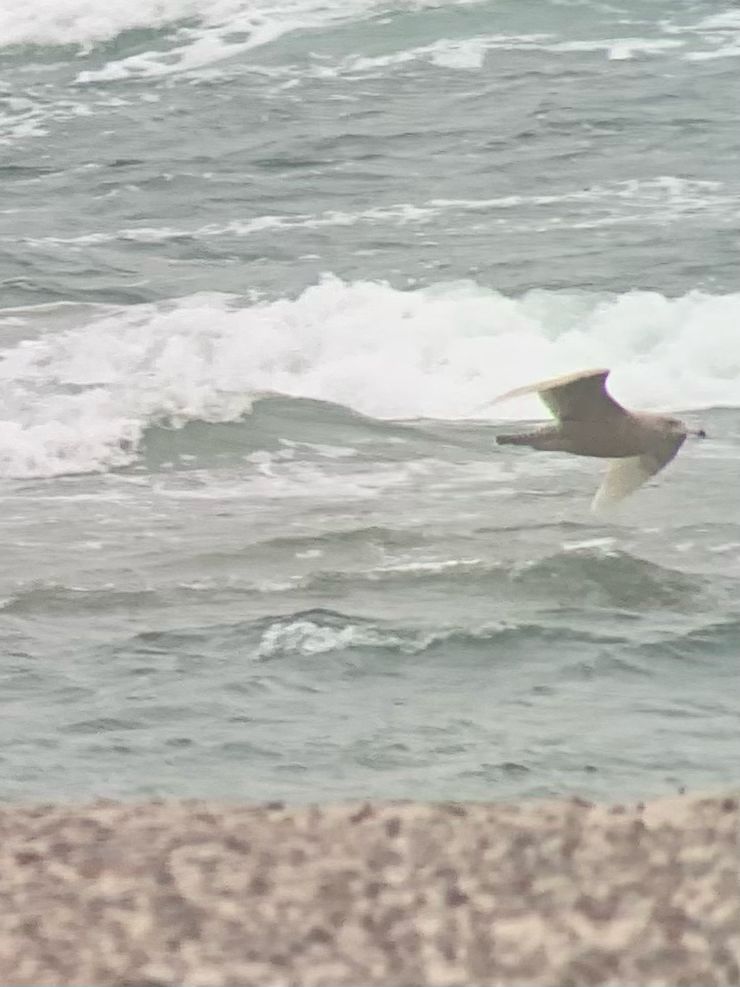
Our afternoon was relaxing and not very eventful. Thomas and me went out for a shopping trip and successfully used up our leftover coins. There was a lot to used! This required a treat: a chocolate muffin was acquired. Simon Jr and me stayed in while Thomas went out for a sunset walk along the beach. I am looking forward to the fajitas tonight.
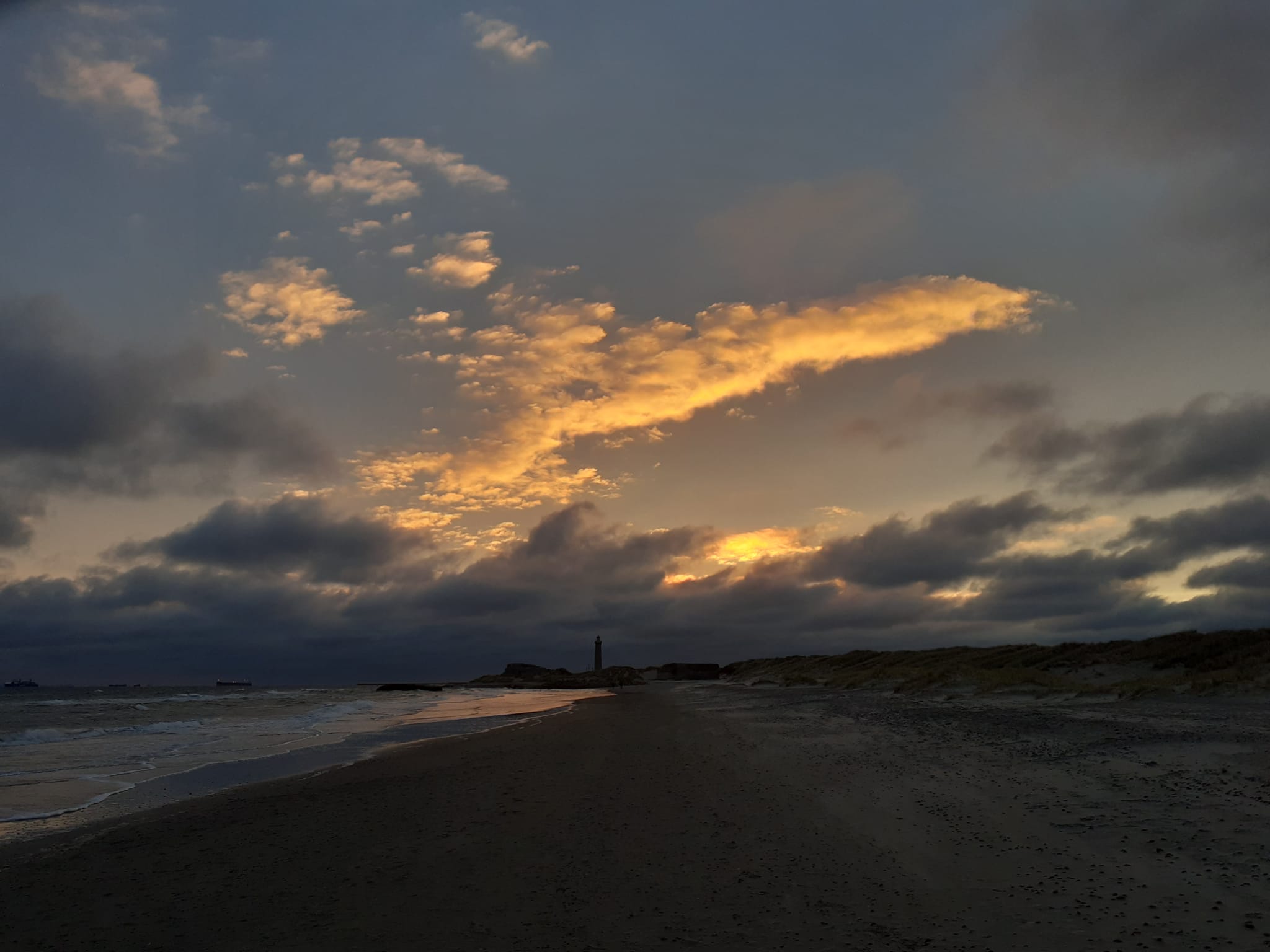
Ringing (Kabeltromlekrattet):
Wren – Gærdesmutte 1
Blue Tit – Blåmejse 1
Mealy Redpoll – Stor gråsisken 3
Lesser/Common Redpoll – Gråsisken 2
Total : 7
People: Mathilde Ducroz, Thomas Weston, Simon Kiese, Gustav Nyberg, Knud Pedersen and Simon S.C.
A link to today's observations from volunteers and local observers.
We Got Cold!
Today was the coldest weather we have had for a little while now. The wind gusted from the NE and temperatures remained above zero, however felt a lot lower with the wind chill. Full cloud cover remained all day and it was another day where we did not see the sun. Migration count was undertaken but no ringing was completed today.
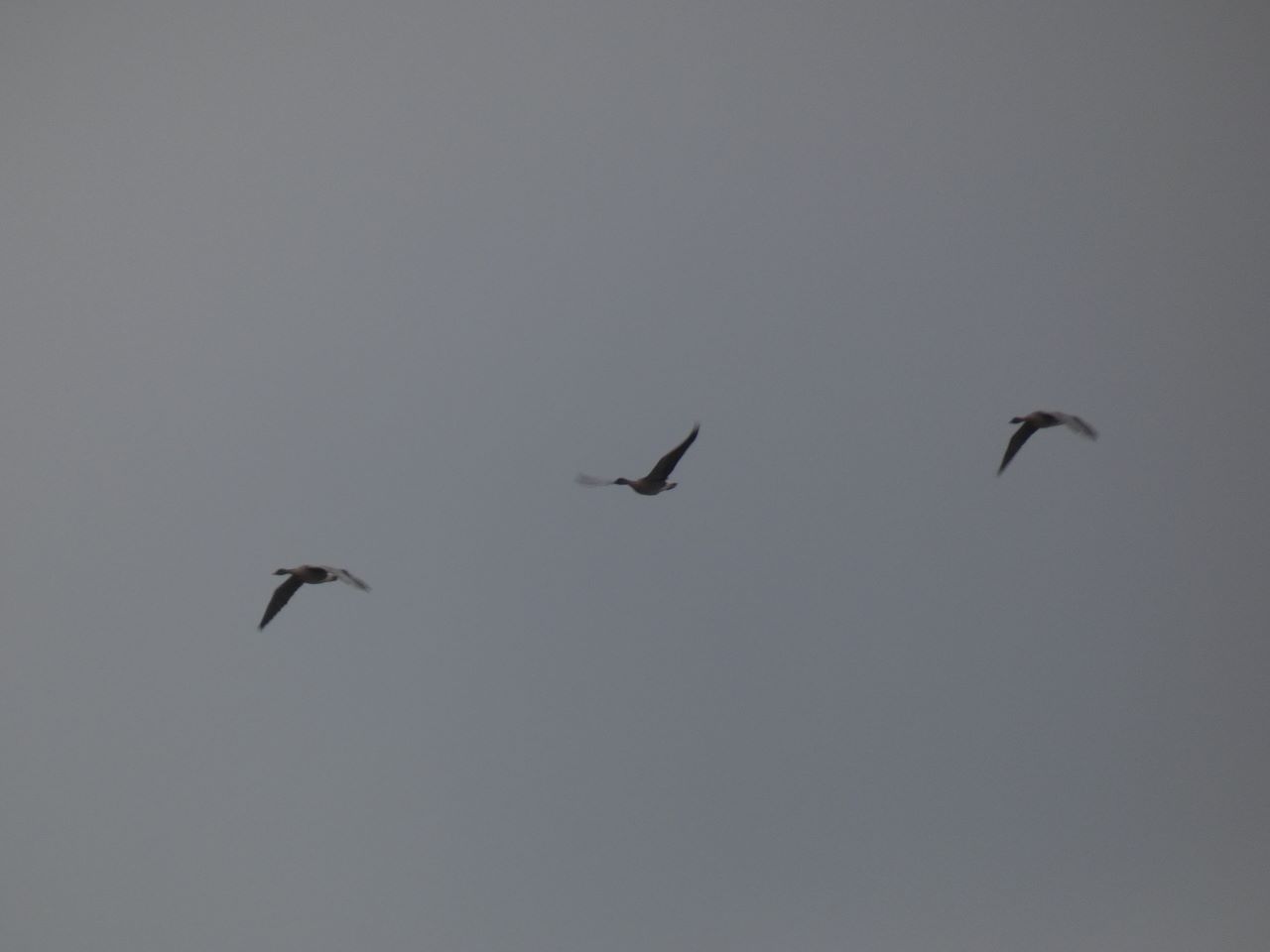
Figure 1: Record photo of the Taiga Bean Geese [Tajgasædgås]. The bill colour was seen in the scope well.
The day started with Gustav and I going to the migration count at Nordstand. Between the frequent snow, hail, snail (mix of snow and hail at the same time), rain and drier periods there was some nice migration. In the first two hours the count started quite busy for birds moving East. There was a nice passage of Razorbills [Alk], Gannet [Sule] and Kittiwake [Ride] as well as nice numbers of ducks. Ducks are a feature of strong NE to E winds here and they are always super cool to see flying past just metres off the waves. Ducks included the usual Common Scoters [Sortand], flocks of Eider [Ederfugl], Goldeneye [Hvinand], Mallards [Gråand], a few Long-tailed ducks [Havlit], a few Velvet Scoter [Fløjlsand], low numbers of Red-breasted merganser [Toppet Skallesluger] and the odd Wigeon [Pibeand] too. Once the showers decreased, the wind increased, and the temperature fell again. In the last two hours migration was slower but included flocks of birds arriving in off the sea, probably from Norway or Sweden where they either left at dawn or late last night. This included flocks of Greylag Geese [Grågås], Whooper Swans [Sangsvane], a flock of Redpoll [Stor/Lille Gråsisken] and the highlight of the count, three Taiga Bean Geese [Tajgasædgås] who almost flew right overhead. Record photo attached above (Figure 1). The Taiga Bean Geese were super exciting as they were the first ones Gustav had ever seen, and only my second ever flock!
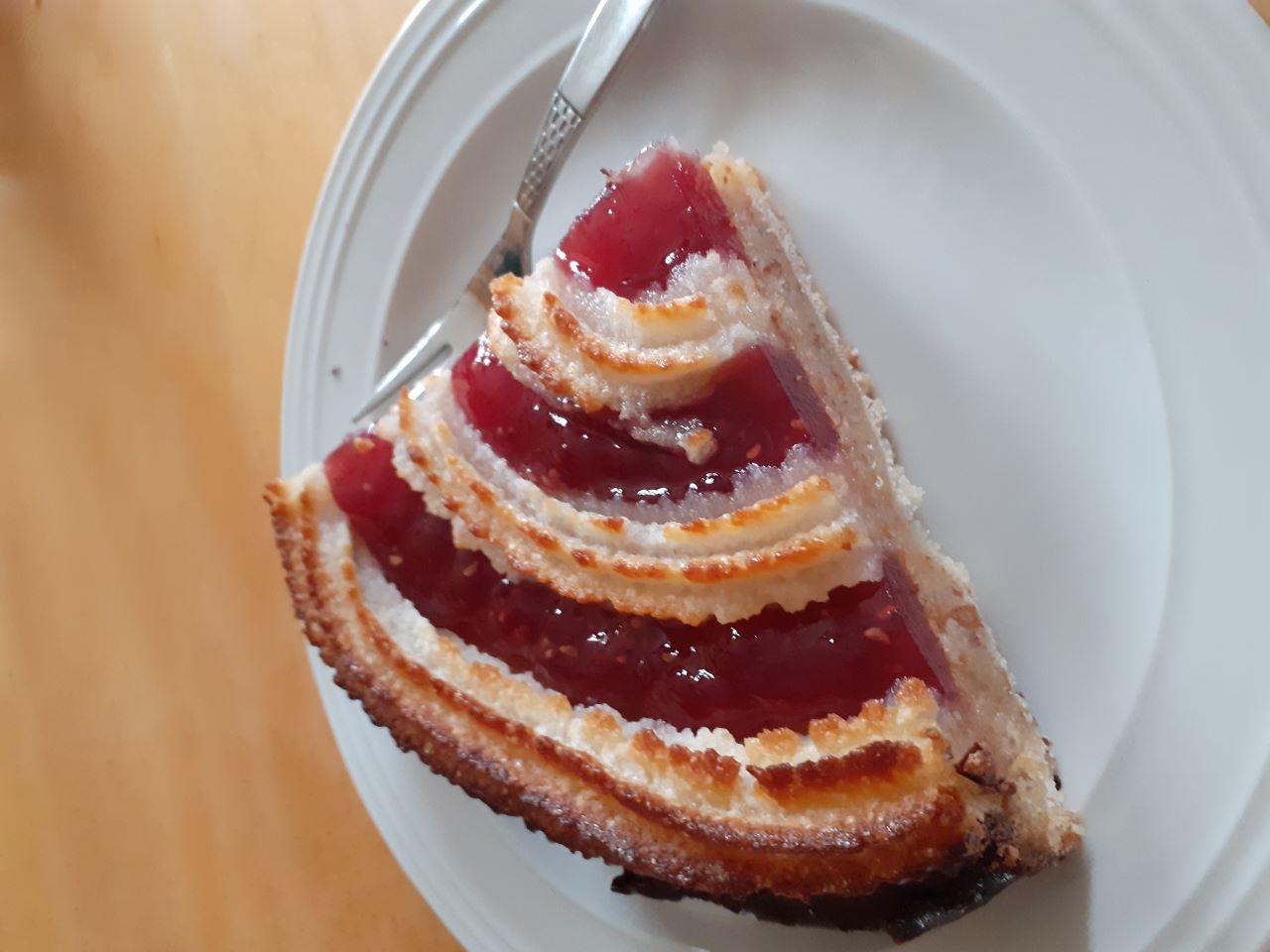
Figure 2: Cake!
After cycling back with the wind in our face, Gustav and I could not feel our feet or our hands. We were freezing cold, and it took quite a while for us to be able to feel ‘normal’ again. However, with the warmth of the observatory, as well as the consumption of some cake (see Figure 2), and lunch, we soon felt alright again.
Whilst we were out, Mathilde and Simon chose the more sensible option this morning and had a nice lie in. I mean we all deserve one of those every so often, so it was nice to see them feeling a bit more awake than recent. After lunch, while Gustav and I were planning sessions and data inputting, Mathilde and Simon started to reduce the number of ringing ‘sheets to be checked’ by checking the already inputted data for any mistyped numbers. It is always great to get started so thanking you both! I am grateful for you guys doing it after the number of hours we spend inputting the data to begin, and to have an almost empty folder by the end of the day is always a good sign. Other afternoon/evening tasks involved placing apples in the old garden ready for some potential thrush ringing as well as picking up a dead Hare to go in the freezer. Simon made us a lovely meal and we ended with a small table tennis tournament before bed, for most of us, at the early time of 20:30!
Ringing totals
No ringing was undertaken today due to the weather.
Overall total: 0
Today’s observations on Dofbasen from observers in the area
People: Thomas Weston, Mathilde Ducroz, Gustav Nyberg, Simon Kiesé and Simon S.C.
A poetic duck day
It was still dark,
we were on our way,
with Knud to Nordstrand,
for a four-hour-stay.
Even at the most sheltered spot,
It was pretty cold,
If Gustav would have offered Mulled Wine,
It would've been directly sold.
Geese (Gås) and Whooper Swans (Sangsvane) were passing by,
some flew low and some flew high.
Soon the clickers were on fire -
and the numbers just got higher.
Many Goosander, in danish Stor Skalleslugger -
We stayed there sitting in the cold - I tell you - we are not out of sugar.
The total numbers were very nice
and we also had many Goldeneyes (Hvinand).
In the meanwhile at KAB,
Thomas and Mathilde were out to see
How many birds there are to catch -
To ring them in our local patch.
A Bluetit (Blåmejse) and some more came,
"They are biting us" - it is a shame.
The coldness made them feel sleepier -
Three lovely nordish Treecreeper (Træløber)!
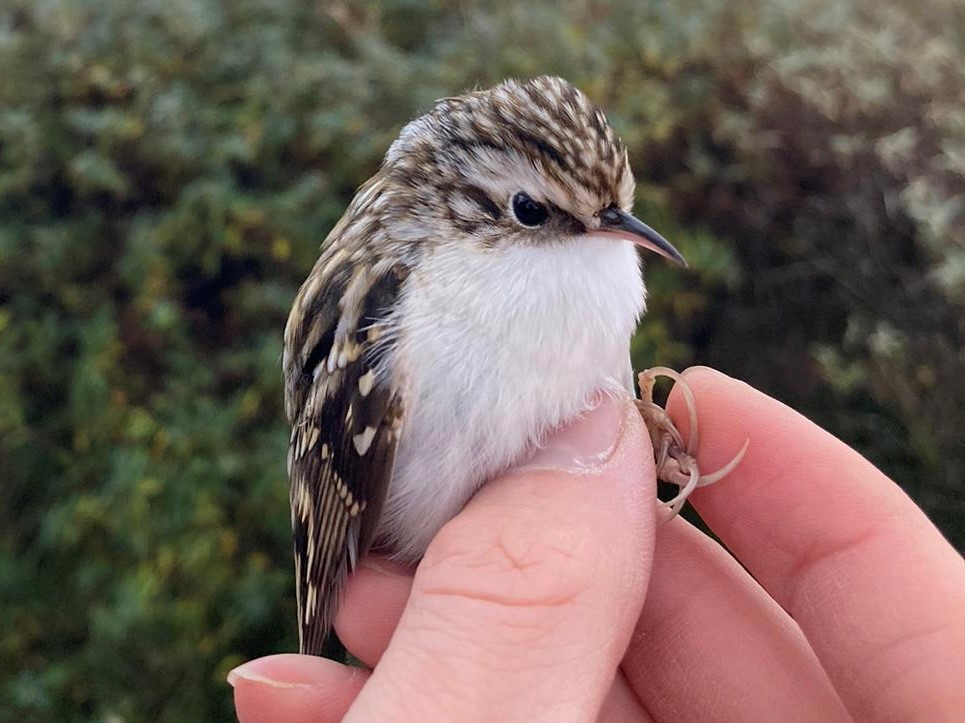
After a nice lunch break -
Thomas was sleeping, the rest of us was awake.
Gustav thought about catching a snake.
Then we went shopping before it's getting too late.
It is Gustav's turn for cooking tonight,
The pizza is shining in the oven so bright.
Now I end this blog, we are very hungry now.
Thanks for reading, I hope you enjoyed the show!
Ringing (Kabeltromlekrattet):
| Bullfinch (ssp. pyrrhula) |
|
2 | RI | |||||||||||||
| Treecreeper (ssp. familiaris) | Træløber, Nordlig (ssp. familiaris) | 1 | RI | |||||||||||||
| Goldcrest | Fuglekonge | 1 | RI | |||||||||||||
| Blue Tit | Blåmejse | 5 | RI | |||||||||||||
| Chaffinch | Bogfinke | 1 | RI | |||||||||||||
| Blackcap | Munk | 1 | RI | |||||||||||||
| Bullfinch | Dompap | 1 | RI | |||||||||||||
| Wren | Gærdesmutte | 1 | RI | |||||||||||||
| Robin | Rødhals | 1 | RI | |||||||||||||
| Great Tit | Musvit | 1 | RI | |||||||||||||
| Blackbird | Solsort | 1 | RI |
Total: 16
A link to today's observations from volunteers and local observers.
People: Thomas Weston, Mathilde Ducroz, Gustav Nyberg, Simon Kiesé, Knud Pedersen.
Gråsiskener i fyrhaven
Denne morgen tog jeg ud og observerede. Her kom de forventede arter såsom; Alk, Lomvie, Sortand m.m. Derudover fortsatte gåsetrækket, hvor der kom både Grågæs og Canadagæs. Senere kom der syngende Sangsvaner. Alt i alt en stille og rolig morgen ude på Grenen. Jeg observerede de første to timer sammen med Simon Jr., der ellers forlod mig for at se om han kunne finde nogle Bjergpibere. Han fandt ingen rastende fugle, men hørte og så to flyvende over kabeltromlen.
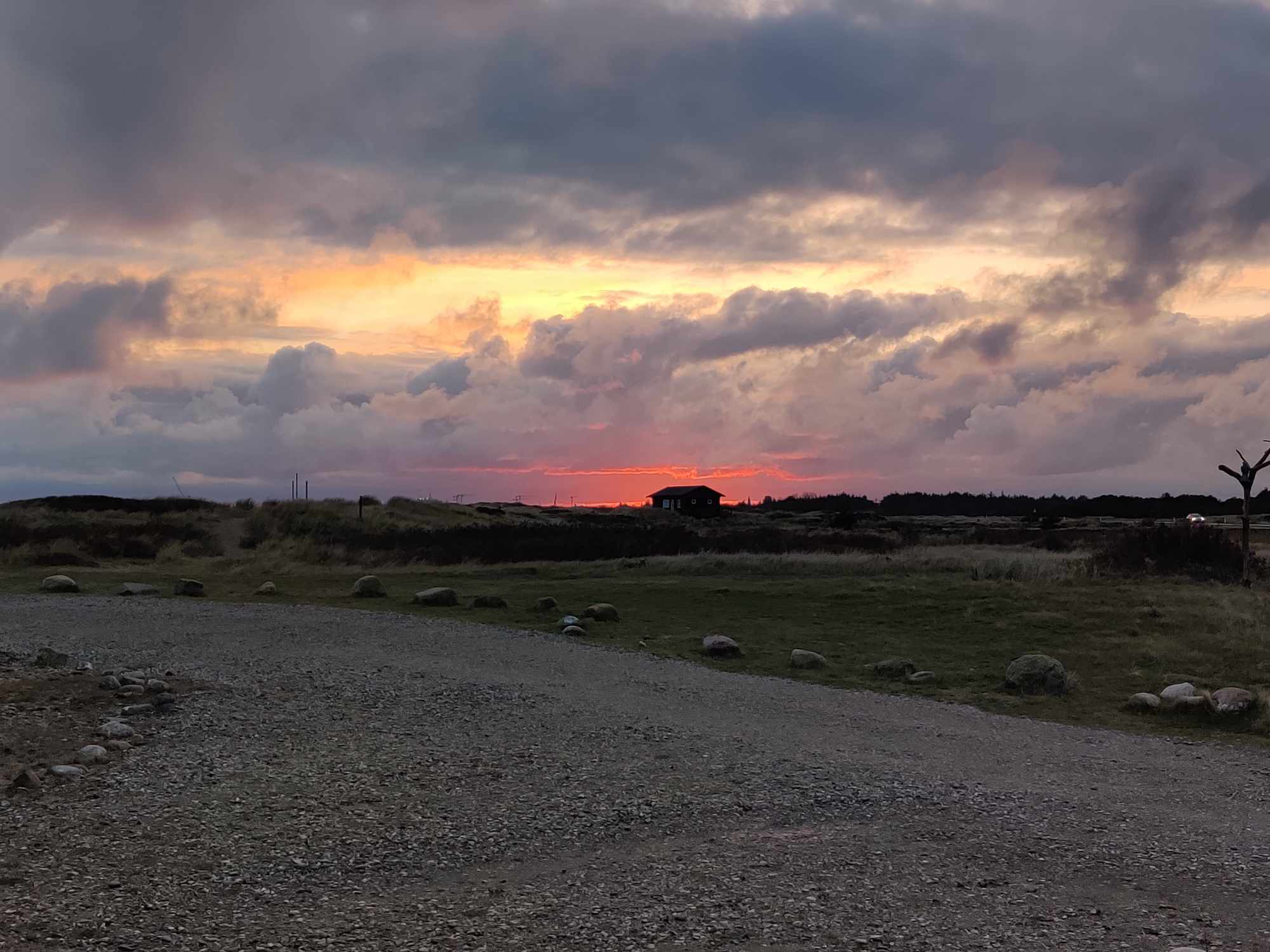
Han tilsluttede sig ringmærkningsholdet, der bestod af Thomas og Mathilde, de havde en morgen med 16 genfangster og 26 nye fugle ringmærket. Heriblandt fik de Rødtoppet Fuglekonge og Blåmejser.
I det, jeg kom lidt tidligere tilbage på stationen end de andre, gik jeg i gang med den tiltrængte og ugentlige rengøring. Det er ofte en god ide at placere Simon Jr. til at lave mad dagen inden rengøringen, ellers vil det hurtigt være nødvendigt igen ;)
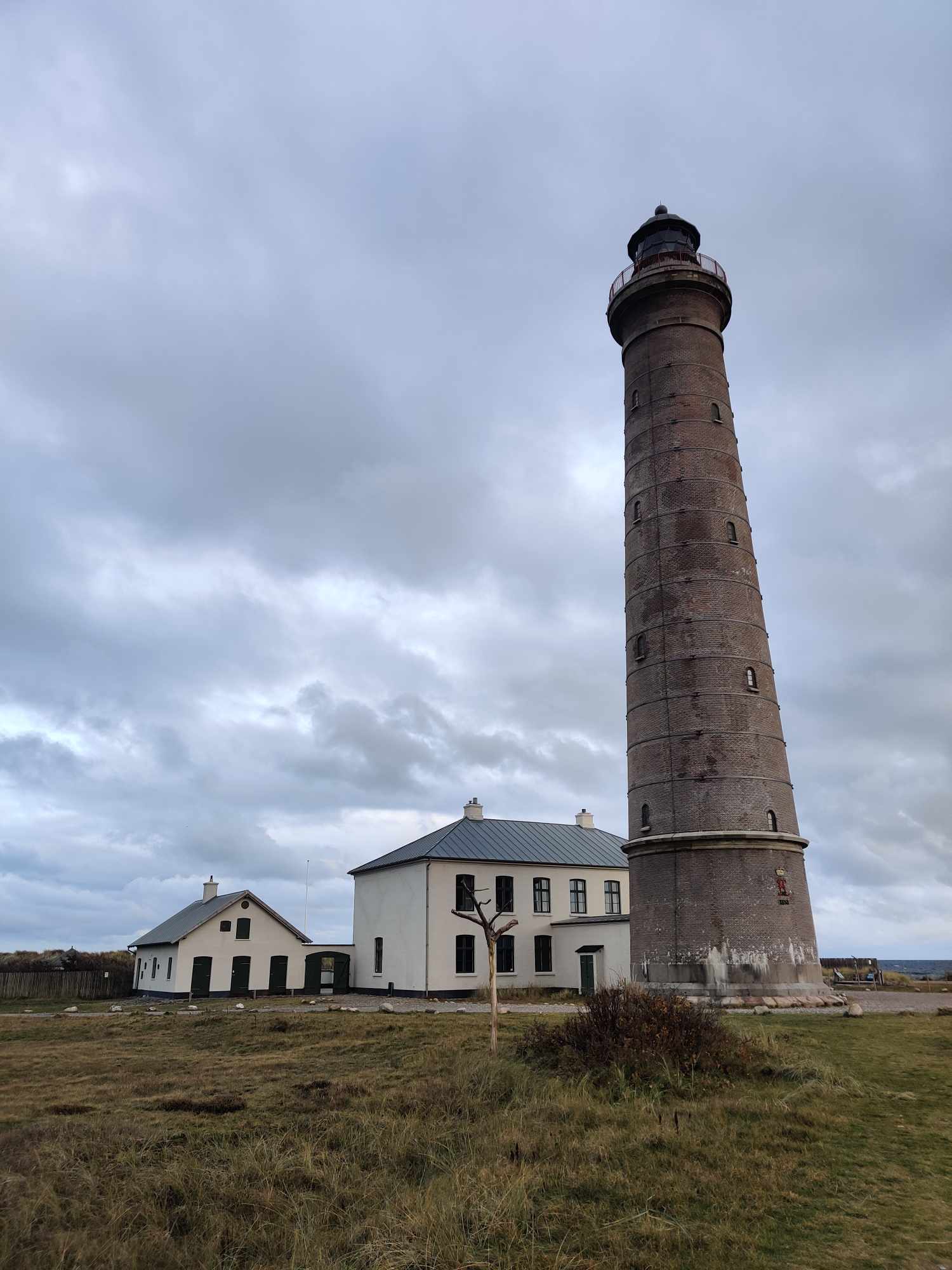
Ellers gik jeg en tur rundt i terrænet og så en flok Gråsiskener som de eneste fugle på min rute. Et sjovt tilfælde var at netop denne flok valgte at flyve ind i vores net ved Det Grå Fyr, hvilket gjorde at vi fik ringmærket en masse Gråsiskener i dag.
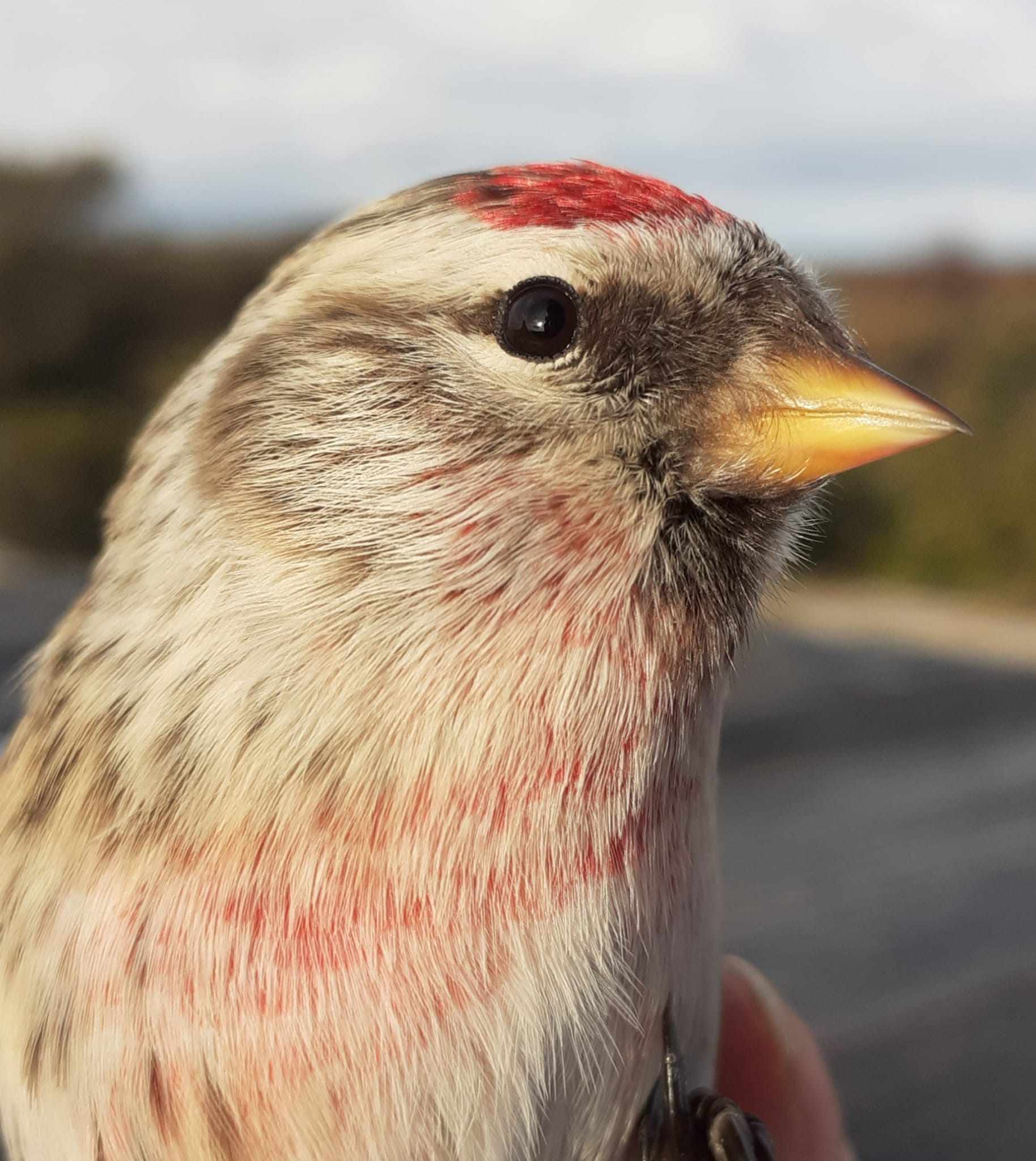
Ringing (Kabeltromlen):
Opdateres senere.
Ringing (Fyrhaven):
Opdateres senere.
A link to today's observations from volunteers and local observers.
People: Thomas Weston, Mathilde Ducroz, Gustav Nyberg, Simon Kiesé
A quiet day at Skagen
The morning looked good for ringing this morning, so Thomas and me headed out to open the nets. Simon Jr joined us later due to phone battery problems which meant no alarm. The morning was very slow with only a few birds at each round. The highlight of the morning was very pretty female Greater spotted woodpecker (Stor Flagspætte).
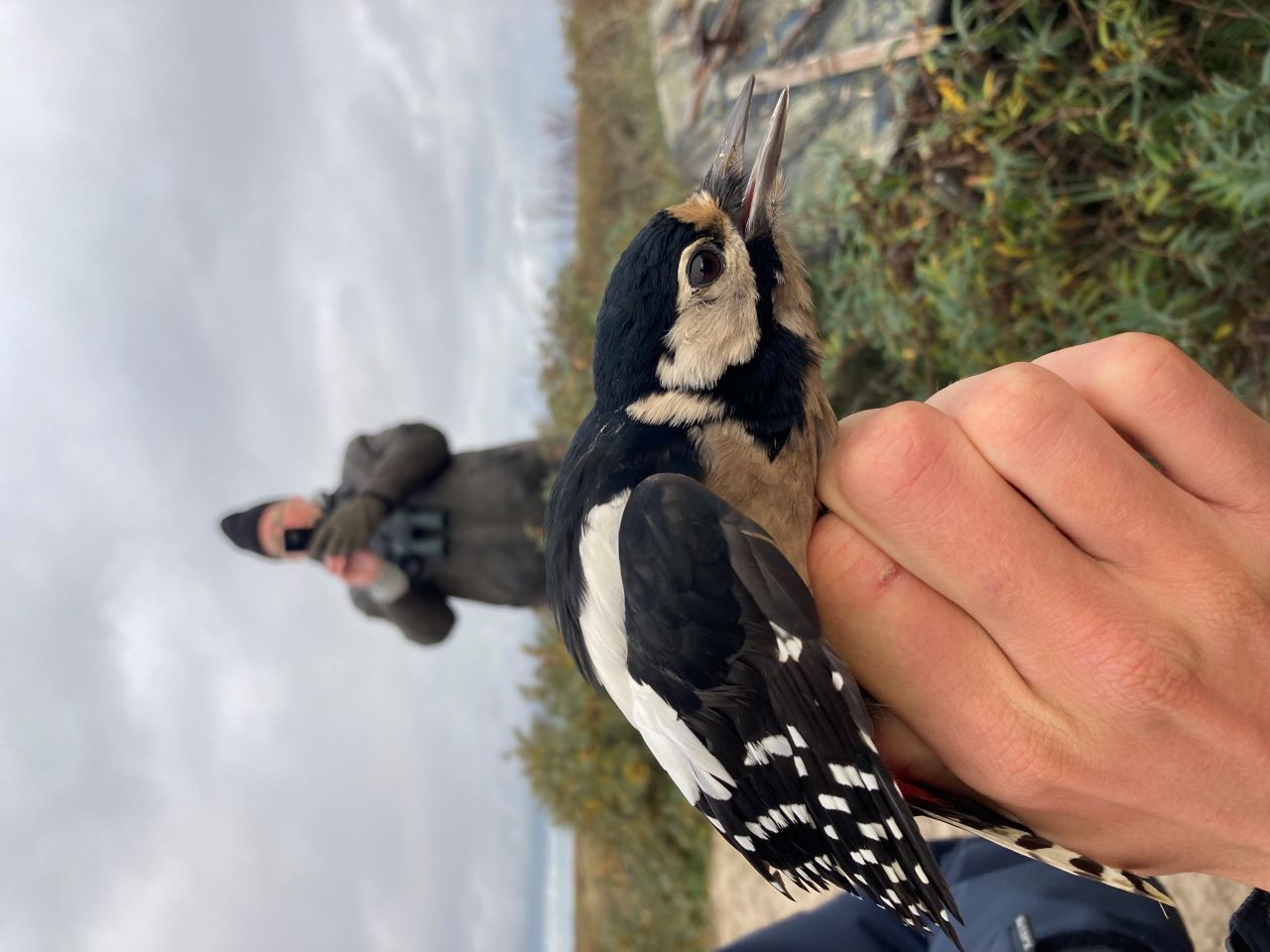
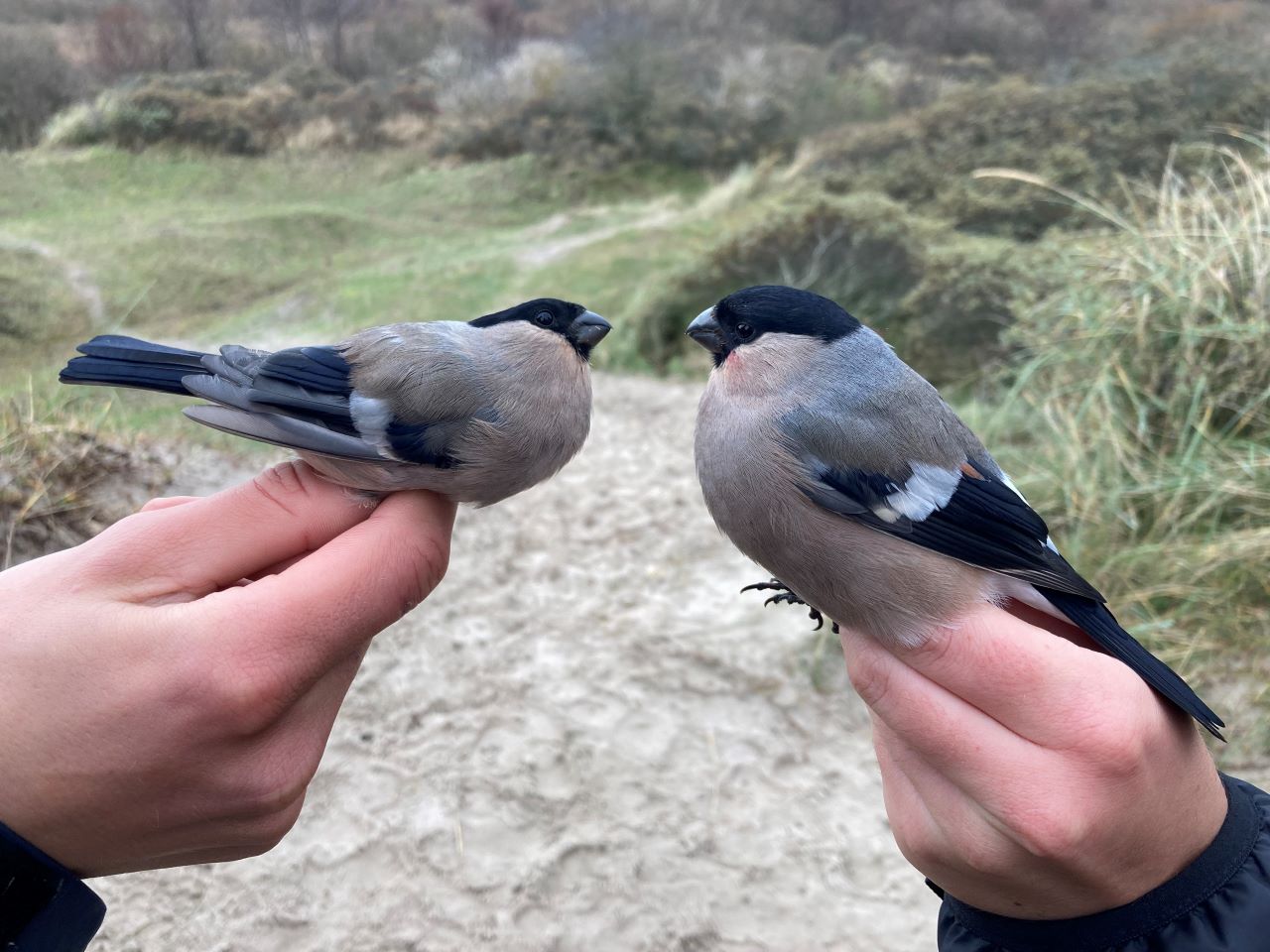
A nice picture comparing the Stor vs Lille subspecies of Bullfinch (Dompap).
A similar slow day happened for Gustav during migration count. A few Red throated divers (Rødstrubet Lom), the usual Gannets (Sule), Eiders (Ederfugl), Common scoter (Sortand), Black-legged kittiwake (Ride) and many Auks. Gustav’s highlight is a flock of Whooper swans (Sangsvane) flying. A really quiet day.
Simon Sr was busy all morning with a board meeting for the observatory and headed out for the weekend. We were given a few food surprises which are always welcome, thank you! A nice surprise actually happened while eating, we saw a Little auk (Søkonge) from the kitchen window. As it was still early in the day, we decided to head to the industrial area in the hopes to see something more exciting. Sadly, no special sighting although I got to pet a very cute horse! On the way back, we spotted a nice flock of Tree sparrow (Skovspurv) and a solitary remaining Waxwing (Silkehale) and an orange cat let me pet him!
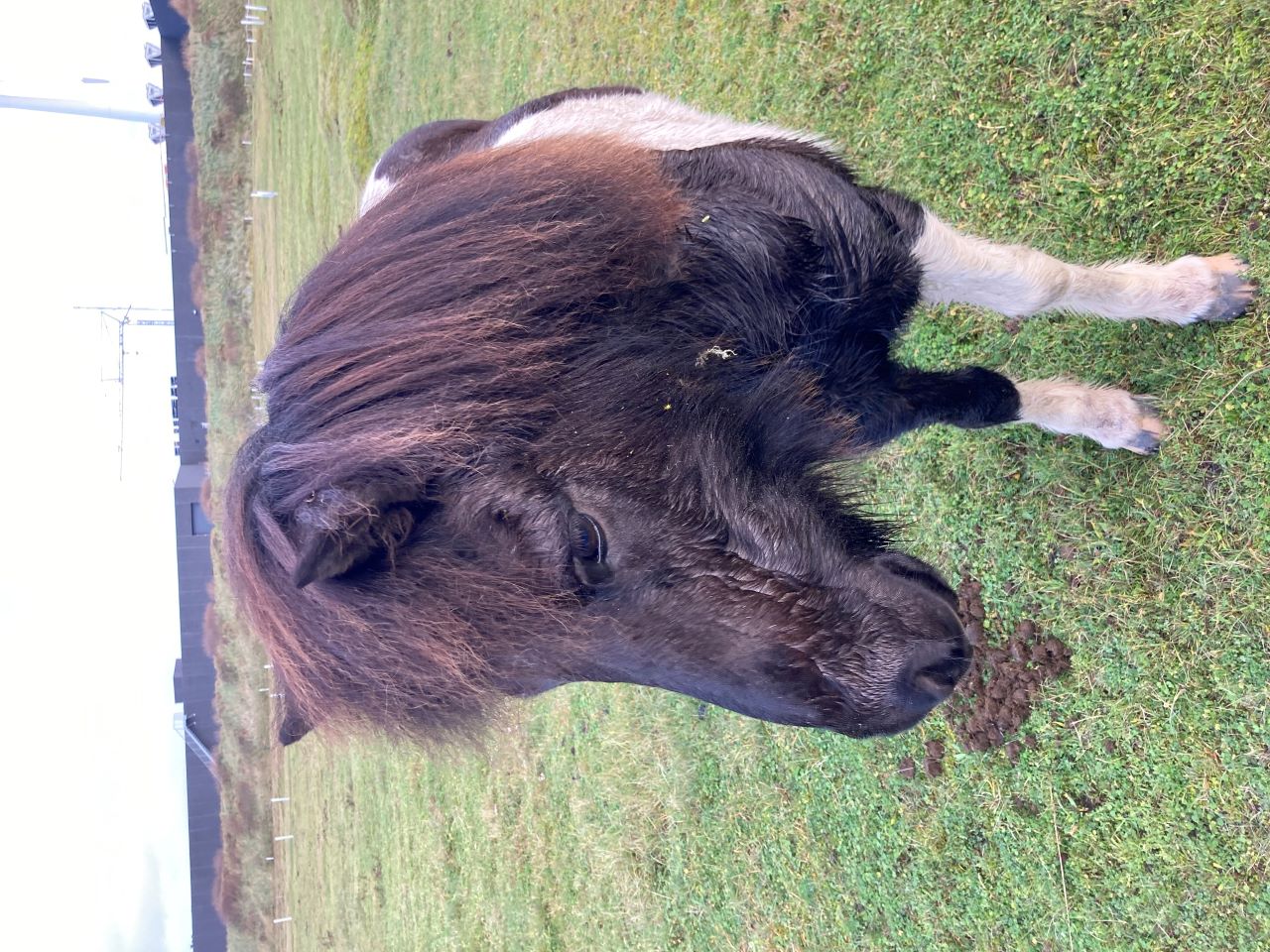
The rest of the day was plain, no exciting happening. Simon Jr and Thomas just came back from night catching, 10 Woodcocks (Skovsneppe) but sadly none caught. Better luck tomorrow.
Ringing (Kabeltromlekrattet):
Goldcrest – Fuglekonge 2
Robin – Rødhals 1
Chaffinch – Bogfinke 1
Bullfinch – Dompap Lille (ssp. europaea) 3
Bullfinch – Dompap Stor (ssp. pyrrhula) 1
Blue tit – Blåmejse 3
Blackbird – Solsort 2
Great spotted woodpecker – Stor Flagspætte 1
Total : 14
A link to today's observations from volunteers and local observers.
